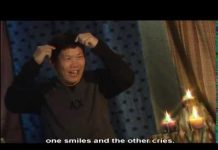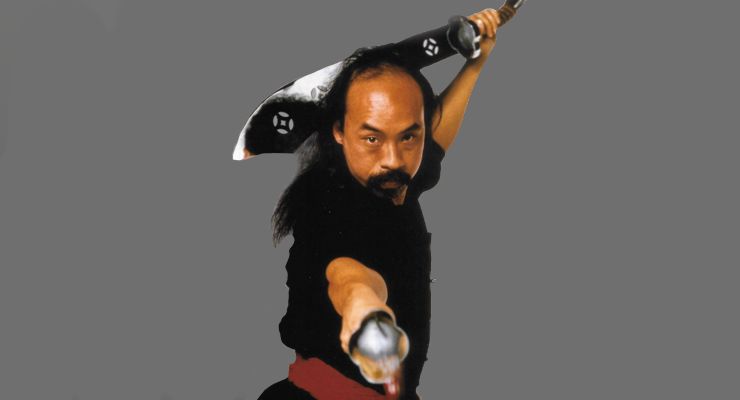
When “Endo,” (Al Leong), who tortured Mel Gibson with jumper cables in “Lethal Weapon” says to you; “When you write this article, the first paragraph has to say that the only reason that I’m doing this interview is because of you, Carl Ciarfalio. That’s the only reason.”
When Al Leong tells you to do something, somewhere in your head, you know you need to do it. So, there it is, the first paragraph.
I think that Al Leong’s story is an exceptional one, the story of a man who has conquered many obstacles in life, both professionally and personally.
Albert “Ka-Bong” Leong’s story is about a man who speaks truth, even when others may not appreciate it. He is someone with the foresight to follow his heart, a heart that leads him down his own path. He has been forced up against mountains, and has tunneled right through them.
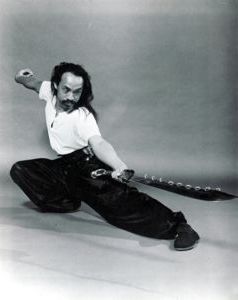
Al Leong is “That Guy” in so many of our favorite action films and television shows. But, as I found out, he is much, much more. He is a much-heralded martial artist with expertise in the ancient Chinese form of Praying Mantis as well as five Animal styles and weapons. He is a stuntman, actor, writer and director. He is a master at building motorcycles and doing fine-lined bodywork on classic cars. He is a father of two beautiful children. He is a friend to many people, and a truthful thorn to others. He’s a man of conviction and pride without being prideful. He loves beautiful art, photos of life events and stuffed animals. He is a man who has survived stage-3 brain cancer and now lives with effects of a stroke. He is a simple and complicated man who lives every day with his glass much more than half-full.
I didn’t have to read Al’s book to know about Al Leong, because I consider Al to be my friend. I do know that friendships and work friends get mixed-up in Hollywood, but when we meet-up, no matter how long it’s been, we seem to pick right up where we left off.Al Leong’s life has been so full that in 2010 he wrote a book titled “The Eight Lives of Al ‘Ka-Bong’ Leong.” Al’s book is 200 pages of life, with hundreds of photos all chronicling Leong’s life from his youth until today. It starts with him growing up in St. Louis and working at his parents’ laundry and takes us through his life as one of the most well known actors of his genre, and then goes way beyond showing us his quest to conquer life.
Before this interview, what I knew about Al Leong came from those early years in our careers, years when we would work together or showed up at the same functions. I knew him as an expert martial artist and a pro on set. He was well mannered and intelligent, never blowing his own horn…humble. I like those traits in people.
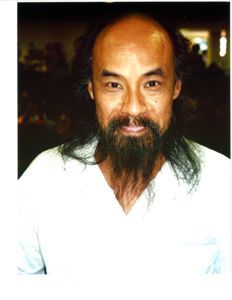
When I first asked Al Leong about his involvement in the martial arts community, he was very precise about his feelings and convictions, but before we look at those feelings, I want to take you through Leong’s early life and through his introduction to the martial arts.Al is a complex man, and thoughtful, a man who accepts what the Universe has handed him and seems to have mastered the feeling of self-awareness that’s given him a solid understanding of why he is here.
Al doesn’t have many, er, any, vices. He doesn’t smoke or drink, and he certainly doesn’t do any drugs, all of which he attributes to his martial arts training. Leong seems to live the quiet life, not quite a Shaolin monk, but he has his priorities in place.
As a youth Al Leong wanted to avoid the pitfalls that many young people were drawn to, so Al decided that he would stay busy and active, and one of the activities he got into was martial arts. He was soon hooked on learning the arts and practicing the arts, and he trained intensely throughout junior high and high school, even while traveling between St. Louis and New York and moving to Los Angeles with his family. Martial arts kept him busy, away from trouble, and let him excel at his natural-born gifts.
Training started for Al at Ark Yuey Wong’s dojo in the 1960s. Leong said that the sensei’s knowledge was truly masterful along with his teaching. Al remembers when Master Wong, who they called the “Old Man,” would bark at him, “NO! MOVE LIKE THIS!” if his moves weren’t perfect. And Al would find the grace and strength to perfect the move. In fact he became so obsessed with the perfection of his art that he would sometimes train six or seven days a week, never attempting to learn a new movement until the previous technique was mastered.
His training cost him $10 a month. A month!
Soon Al’s training went from learning one move at a time to his desire to learn as many moves as he could absorb. And absorb he did. Al would go on to teach martial arts classes at the same dojo that had taught him so well.
Even as Al Leong moved up the ranks gaining knowledge and prowess, his focus, and the focus of his instructors, was not on what color belt he wore, but on his knowledge and his understanding of his art and his ability to show what he learned.
After high school Al went to LA Trade Tech and learned all he could about motorcycles, another love of his. Trail riding, with the wind and dirt in his face, is still a passion that burns in him today. Motorcycling is another of his talents and it is another of his perfect ways to stay in shape as well as to hone his hand-eye coordination and timing. These traits are essential for stunt professionals.
Al Leong moved into the tournament circuit in 1972, at the height of the “Bruce Lee Era” of martial arts popularity in the United States. At this time there were five martial arts schools popping up with-in walking distance of each other. Leong triumphed in those many tournaments as champion of the day. He appreciated the competitions and the innovators of the sport like Ed Parker and Chuck Norris.
Al was surprised that he was given such high accolades in the National Rankings when he was only a self-described “weekend warrior”, never competing outside of California.
This is one of Al’s gripes with the martial arts world, and it makes sense. Leong states in his book, “I was never taught under the belt system…I personally don’t believe in them because there’s no way to say two people are equal.”
But to the shock of many, in 1974, Al Leong quit competing in tournaments. At that time he saw tournaments as a “dead-end” with nothing to prove or to help a man move forward in life. But years later, in 1980, he was lured back to the tournament circuit and won the World Silver Cup MA Championships. Once again he proved that Al Leong keeps the arts close to his heart and lets it flow through every fiber of his being.
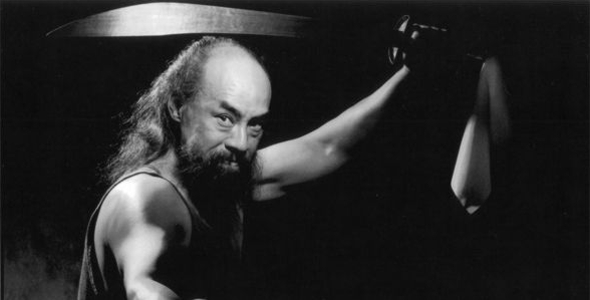
Along life’s path, Al was an owner/partner in a paint and body shop, where his meticulous work of hand painting, pin striping and custom painting cars and motorcycles, was highly sought after. He explained how “the paint and surrounding chemicals would squeeze into every fiber of your body…inside and out”. This was a time before OSHA (Occupational Safety and Health Administration) had a say in what was toxic or dangerous to people in the workplace. Al worked and practically lived at his shop for just over a year until he had to move on from the auto-body business. Al writes in his book, “I remember spraying acrylic enamel many times without wearing a mask. My nose would run for weeks. The paint is highly potent, deadly stuff. The bondo dust in the air was another killer thing. But when you have you own business, it’s a strange thing because you end up working Saturdays and Sundays to stay ahead of schedule.”
The running of his paint and body shop would lead to other life-changing events for Al Leong long after the shop closed, and long after he built custom motorcycles and stunt equipment with his friends and partners.
As a young man, Al lived in and around Hollywood and of course it seemed only natural to look within the entertainment industry. As a young man without any real professional direction, Al was led to Warner Brother’s Studio where he put in an application to work as a “something” or “anything” on the lot. The studio was jumping at the time and needed help in “the hardest job on the set”, that of a grip. It wasn’t long before Al had gotten himself hired to work for the Warner Brother’s as a grip.
Grips are a group of “early in-late out/get dirty/hard working/no complaining” people that makes the rest of our jobs on a film set possible. Grips haul cable, push cameras, build stages, strap cameras to moving cars, sling c-stands, build green screens, lay camera track and just get it all done…and then put it all away, neatly, just to get it all out the next day and do it again.
Leong’s experience as a grip as well as his inborn sensitivities gives him a very healthy respect for “ the crew.” These are the people who always make things happen behind the scenes and don’t get any credit.
Al appreciates all the hard and tiring work that occurs on a movie set and the folks that make it happen. It’s the kind of work that let’s us see movie stars, movie sets and movie action without ever questioning ‘how it happened,” but instead saying, “wow, that was great!”
Leong was a hard working young man with good work ethics and the realization that he was lucky to be working in such an exciting industry. He also realized that being on set and behind camera would be a great learning experience for someone who is smart enough to pay attention…and Al was one smart guy.
Al always kept his opinions to himself, but one day on the set of a low-budget movie, Al was approached by the director who was having trouble getting a fight scene choreographed between a couple of actresses. He knew that Al had a martial arts background, so he asked Al for help. This was the start of Al Leong’s long and illustrious movie career.
Al gladly helped the director with the fight choreography and he soon found himself called upon to not only block out fight scenes, but to perform in the scenes as well.
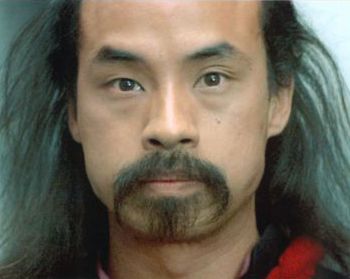
Al Leong was smart and he put his smarts to work. He knew he wanted to stand out in the Hollywood Asian community, and to do so he h
ad to be different and stay away from the stereotypical roles given to Asians in the industry.
Al’s first big-movie-break came when he was invited to join the cast of 1986’s cult hit, “Big Trouble in Little China” with Kurt Russell and Kim Cattrell.
The stunt coordinator of the film didn’t know Al, so he never called Al for an interview or audition. But Al did what we all did in those day, he went “hustling a set,” meaning he went to the set to introduce himself to the stunt coordinator in hopes of landing a part in the project.
The director, John Carpenter, saw Al on the set and asked him to join the cast, a big hand up for a new talent. Not only was he invited to join the cast by Carpenter but also he was introduced to the stunt coordinator and the other stunt players as well as the actors on the show.
This is how you move forward in the entertainment industry, you have people who know you and recognize your talent recommend you…or deny you entrance because your talent is either not good enough, or your talent is so good that you intimidate the sometimes-ego-driven-coordinator.
The best part of these wonderful happenstances is that through them, Al and John Carpenter became life-long friends. They fit well together as they are both very talented and particular when it comes to movie making.
Al soon found himself being selected by stunt coordinators to work on such TV show and films like “The A-Team,” “Action Jackson,” “Die Hard” and “Lethal Weapon.” Al credits this run to stunt coordinator turned director, Craig Baxley, and producer Joel Silver. Both men recognized superb talent when they saw it and helped Al where they could, guiding his career and tapping into his talents.
Leong was now working steadily as a stuntman and fight coordinator, and as an actor in some of the most memorable characters on screen, most of who will always stand the test of time.
Leong made a name for himself in Hollywood, but his biggest challenge still lay ahead. The doctors discovered that Al had brain cancer. His cancer was diagnosed in the early 1990s, and it was already stage-3 cancer at the time of diagnosis. That’s just about as far as you can go…before you “go.”
Al had been getting headaches, something that was unfamiliar to him, so when he went to get checked, his doctor immediately sent him to see an oncology specialist, Dr. Solomon Hamburg.
Soon after, Al’s vision began to blur. When they found the tumor it was located at the base of Al’s brain. The tumor was inoperable and Al was given a 50-50 chance of survival. Chemotherapy as well as radiation treatments were his only hope. A combination rarely used except in extreme circumstances as this one.
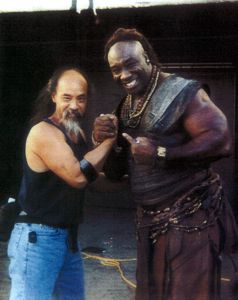
Leong suffered the long and debilitating effects of chemotherapy treatments, traveling in and out of Cedars Sinai Hospital in Beverly Hills for over a year. He was forever nauseous and he lost forty pounds and clumps of his signature hair.
When it came to the radiation therapy, Al had to lay on a treatment bed in the hospital with his head in a full custom headpiece hood to keep his head still. That way the radiation could be shot directory at the same place in his skull attacking the tumor day in and day out.
The doctors told Al that if he had not been in top physical shape, he wouldn’t have survived the cancer or the cancer treatments. Once again, the martial arts lifestyle helped him survive a life crisis. However, the same treatments that saved Al’s life would later force him to face serious health issues.
Leong had to have his right eardrum removed along with a salivary gland due to his tumor. He has encountered shingles and throat and stomach infections. He can no longer eat popcorn or French fries; they will become stuck in his throat because of the lack of saliva which forces him to carry a bottle of water with him at all times.
In that year of intense treatment, Al thought a lot about death, but more than that, he wondered ‘why’ it happened to him. He didn’t smoke, drink or do drugs…ever! Did he create this, or was he just a random case like so many others?
After the treatments at the hospital, Al built himself back up and was surprised that he was able to perform almost everything that he had done before the cancer treatment. This, my friends, is what I would describe as “HEART,” something that Leong attributes to his martial arts training.
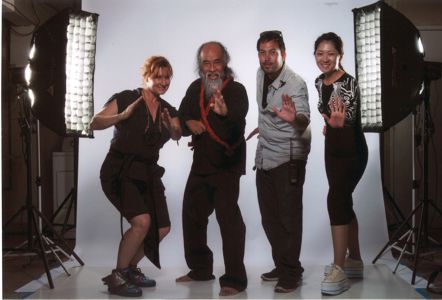
Al never missed a beat, raising his stock in the industry as a performer and choreographer, throwing his masterful kicks at David Hasselhoff in “Knight Rider,” Tom Selleck on “Magnum PI,” in “Bill and Ted’s Excellent Adventure,”
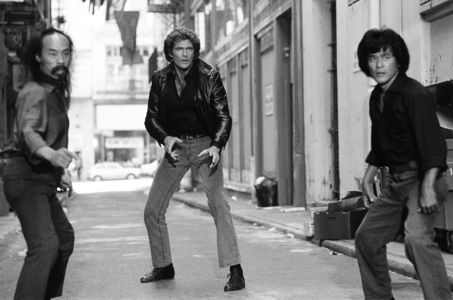
“TJ Hooker,” “Death Warrant” and more. It was in “Rapid Fire,” that he made his triumphant comeback from cancer, preforming the final fight in the film with the late Brandon Lee, a fight that Leong, working in concert with stunt coordinator Jeff Imada and Brandon Lee, is very proud of since he was able to bring the talented touch of “Al-Kabong” onto the screen.
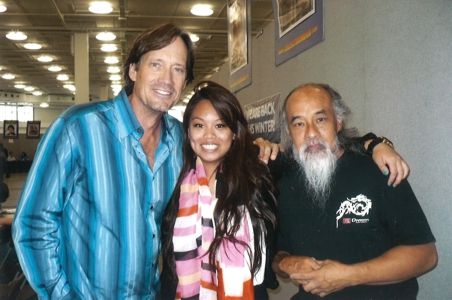
It wasn’t long before Leong was once again sought after by producers, and he landed in Toronto as fight coordinator for seasons three and four of “Kung Fu: The Legend Continues” staring David Carradine and Chris Potter. This was a fight-coordinating job that would allow him to preform fights for and with Carradine and Potter.
During the fourth season, despite feuding with a producer who Leong states knew pretty much ‘next to nothing,” Al wrote two episodes for “Kung Fu” because, as Leong puts it, the writers were more than lost when it came to storylines.
Writing an episode for a TV series takes talent, and not everyone, even seasoned writers, have accomplished the feat. Al Leong became a member of the Writers Guild of America, an honor that many want and few achieve.
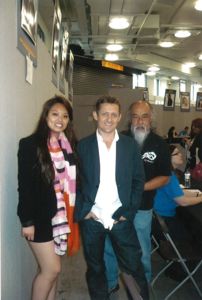
The feud with the execs, and Al’s vision of how the show should progress, caused tension. The producers simply wanted to get the episodes completed, in the can and move onto the next episode. This was very upsetting to Al and for good reason. Shooting, with a “low budget, just get it done” mind-set is both dangerous and more dangerous.
A production company that moves at a speed that doesn’t allow you to think and prepare for what lies ahead is a disaster waiting to happen on the set.
Leong felt that preparation and safety were greatly compromised on the set of “Kung Fu” so much so that he wrote a scathing, truth-filled letter to the execs back at Warner Brothers Studios. He outlined the hazards that were faced on a daily basis, the lack of supervision or foresight by the on-set producers and the consequences of what their actions and lack of actions would birth.
When Warner Brothers failed to respond, Al, a man of principle, left the show, unable to associate with people who didn’t care for the expert advice from those they hired. Welcome to show business.
Leong wouldn’t stand still for long. He was soon back in Hollywood weaving his magic on screen, creating characters that continue to live on in our movie memories.
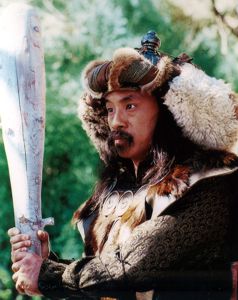
From “Lethal Weapon” there’s Endo; Uli from “Die Hard”; Genghis Khan of “Bill and Ted” and Minh from the movie “Rapid Fire” as well as outstanding characters in “The Others,” “24,” “Scorpion King” and “Deadwood.”
When I asked Al, who is Chinese American, about the Asian influence in Hollywood, he tells me that he believes that the Asian community doesn’t have a big voice or presence because they have nothing unique to offer the American culture. He explains that in his beliefs, the majority of Chinese don’t delve into their past. This is partially because so many came to the states by way of San Francisco, working as immigrants at low paying, backbreaking jobs and the majority of their records, if they had any, were destroyed in the Great San Francisco Earthquake.
Leong is very aware of the “type-casting” and how “culturally downgrading” the Asian performer’s role can become. He states in his book, “If a show is really bad, I will not work it. Many don’t have that luxury and will just deal with it. However, if a show depicts an Asian in a strange way, I will probably be the only one out of twenty Asians who will speak up against it. And, if things don’t change, I am, without a doubt, one of the very few who has walked off and will again.”
He goes on to say in the book under the heading, “Asian Stupids,” that “On Sylvester Stallone’s movie “Cobra,” I was chosen as one of the leads.
But, an Asian group protested because they hated the idea of an Asian bad guy, and so, I was removed from the movie. I hate these stupid protest groups that have no idea what is going on.”
While Al was entertaining us on screen, he was also writing, producing and directing his own film originally titled “Daddy, Tell Me a Story,” but after several snafus with the actors availability for reshoots and missing scenes, Leong recut the movie and titled it, “Scarecrow’s Dream.”
It became a completely different story than originally intended, he tells in his book. The story is about a girl who receives a brain transplant and her quest to find out whom her brain originally belonged to. Maybe a little far fetched, (not if you can picture almost any sci-fi movie…”Alien”?), but the point is that Al never gave up on the film. He did what it took to get his film made, not an easy task no matter what the budget is. This speaks volumes about the man. If one can beat “The Big C,” then making a movie was just another something for Leong to conquer, and he did.
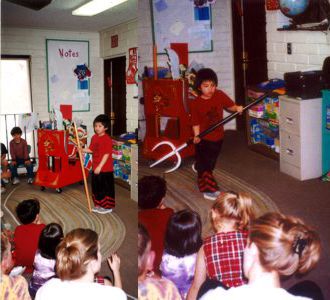
Al Leong’s son as a child teaching his class about weapons
As a boy, Albert Leong’s heroes were cowboys; John Wayne, Clint Eastwood, all the stars of television Westerns; all the shows and movies that were popular in the 50s, 60s and 70s. His heroes were all the top action stars of the day, pure Americana. Not an Asian in the bunch…except for Bruce Lee as “Kato.”
It surprised me a little that the first names out of Al’s mouth weren’t Bruce Lee or the like. Wait. Maybe I wasn’t so surprised.
Al’s introduction into the world of martial arts on the big screen came to him as it did to so many of us, through the action stars like Bruce Lee, Samo Hung and Chuck Norris.
What does Al think of action films that are being made today?
According to his book:
“Today, it seems the Hong Kong wirework is hot…This, combined with the ability of today’s computer-generated images, have raised movies to comic book level where anything becomes possible.
“I remember watching the old sword fight movies from Hong Kong dating back more than 30 years. They had all the flying and flipping expected from sword fighting in Chinese myths and tales. This type of aerial action has always been part of the stories. So, this type of action with me, was totally acceptable. The wirework of the Hong Kong films were seen as nothing but a joke on the American shores. But, they never thought twice about a gut called Superman flying in the sky to save his victim.”
Hmmm. Good point. I must concur.
Leong continues, “What I am saying is, let’s get back to the story. I’ve seen a lot of action movies that are just that and only that. Where the hell is the story…to be able to blend a story with action is the key to longevity.”
Leong sites a couple of “Batman” movies, “Salt,” “Taken,” “Wanted” and “Inception” as films he believes melds a good story with action and not too much sci-fi.
Al has always kept his promise to himself and he continued to work on films and on television, always marching to his own drum. No matter what life threw at him, he worked to turn himself into a fine physical specimen so he could continue working steadily in his chosen profession as a stuntman/coordinator and fight choreographer.
However, on a September day in 2005, after he had finished his daily workout on his elliptical machine, and after he had taken a shower and completed some tasks at his daughter’s computer, Al spun around on the bench and realized that he couldn’t stand up. He wasn’t sure what was wrong and when his wife came home she found Al sitting on the bench, almost frozen in place.
When the ambulance came to take him to the hospital the EMTs told him that he had suffered a major stroke. There was no warning, no light that went on, no buzzer, it just happened. Apparently for Al, it was the result of the after effects of his cancer treatments years earlier.
The stoke cause Al to lost the use of his right arm, which was his dominate side. He limps on his right side as well. Al had to learn how to speak again, walk again, write left-handed and suffers from a weak bladder, and his mental capacity has been lowered by about 20%. This means that he thinks a little slower than most of us.
Because of the stroke, Al’s lungs can fill up with fluid, and he has to have the right artery in his neck drained of a build-up of plague-like congestion once a year. This is the only blood flow he has to his brain. Even though the blockage was cleared, Al still goes into the hospital once a year to have his neck opened up and his artery scraped and cleared. This is done to hopefully ward of another stroke that would completely block off the blood flow to the brain.
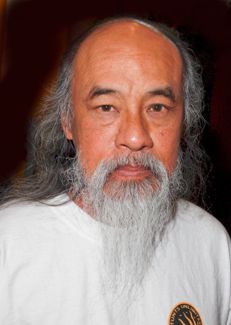
To this day Al Leong is a walking miracle. He has suffered from more pain and anguish than most of us will ever experience, but you would never know it. He has fought threw battles but has always come out on top. If you look close, you will see in his body what he has overcome, but if you look closer into his eyes, you will see the spark that lights his days.
Even though Al’s ability to do certain things has diminished, like being able to ride motorcycles or quad-runners, he isn’t completely out of his game. Al, the builder of hot rods, bitchin motorcycles and stunt equipment, simply set out and got himself a Utility Terrain Vehicle (UTV) that’s made by Yamaha called the Rhino. The Rhino is an awesome UTV with a steering wheel that Al can operate and a gas pedal that he can press. Once again, Mr. Leong makes lemonade out of lemons.
There are many lessons to be learned from Al Leong, the biggest is how a man can remain thankful even when he appears to hit bottom and how he can turn any situation into a life-building experience.
I am thankful for the lessons that Leong has given us through his sacrifices and by his survival of some of the most frightening situations that we as humans can encounter, not just on movie sets but in real life.
Yes, you can tell that he’s had a stroke, but his kind and honest persona is really the only thing you see. That, and the life and determination of a man who has achieved icon status, beaten unbelievable odds more than once, and hungers for more of what life can offer him…or what he can offer it!
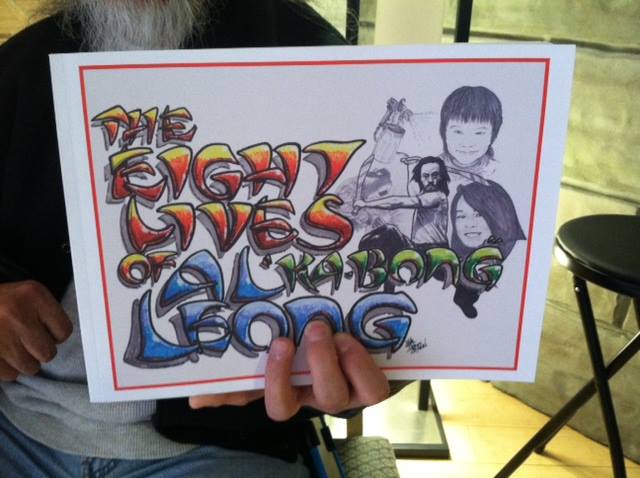
If you’d like to know about this most amazing man, you can find his book “The Eight Lives of Al ‘Ka-Bong’ Leong,” on Amazon.com. The book is full of pictures and honesty. It has the names and stories about those that Leong appreciates as some of the best in the business It also has the names and stories of those who he feels are less than apt when it comes to making movies.You can also follow Al Leong on Facebook and on YouTube under “Awesome Asian Bad Guys”.



